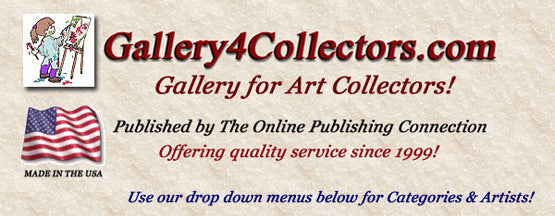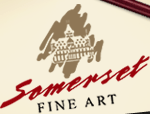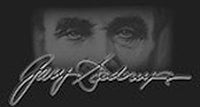Glossary of Art Phrases
Aquatint - Printing technique capable of producing unlimited tonal gradations to re-create the broad flat tints of ink wash or watercolor drawings by etching microscopic crackles and pits into the image on a master plate, typically made of copper and zinc. The majority of Spanish artists Goya’s (1746-1828) graphic works were done using this technique.
Artist's Proofs - In offset reproductions, artist's proofs are additional prints not included in, but of the same quality as, the regular edition. In original prints, artist's proofs are the first prints pulled, which are the truest prints in the edition because the plates or screens have not yet been worn down. Artist's proofs are distinguished by the abbreviation AP and are numbered separately; they often represent 10 percent of an edition and are slightly more expensive than prints in the regular edition.
Artist Enhanced - A term used to describe prints to which an artist has added color or washes after the piece has been printed.
Blind - Printing using an unlinked plate to produce the subtle embossed texture of a white-on-white image, highlighted by the shadow of the relief image on the unlinked Paper. This technique is used in many Japanese prints.
Canvas Print - A reproduction in which an image is printed directly onto canvas. These prints can be produced using offset lithography, digital printing or other methods. Sometimes artists will add brush strokes directly onto the canvas after the piece has been printed.
Canvas Transfer - A reproduction in which inks are chemically lifted off a piece of paper and applied to a piece of canvas. Some processes can replicate the texture and appearance of an original painting.
Certificate of Authenticity - A warranty card or statement of authenticity of a limited edition print that records the title of the work, the artist's name, the edition size and the print's number within the edition, the number of artist's proofs and the release date. It is a guarantee that the edition is limited and that the image will not be published again in the same form.
Chine colle - is a sort of collage technique used in intaglio printing whereby a (usually thinner) piece of paper is adhered to a heavier sheet and printed simultaneously.
Chromolithography - A color-printing process in which separate printing plates are used to apply each component color. Often called "four-color printing because the full range of color tones are achieved with only four plates - red, blue, yellow and black.
Coated Paper - Paper manufactured with a thin surface coating of clay. This coating produces an extremely sharp, finely detailed image because it prevents ink from penetrating the paper fibers.
Collograph - Printing technique in which proofs are pulled back from a block on which the artwork or design is built up like a collage, creating a relief.
Conservation Framing - Framing that aims to prevent warping, fading, tearing or any other kind or print deterioration. Acid-free mats and glazing with UV protection are used in conservation framing.
Conservation stamp prints - Prints that have been reproduced from conservation stamps. Sale of these stamps and prints often benefit conservation program.
Countersignature - Signature of someone other than the artist that adds either additional authenticity or historical value to a limited edition print.
Dealers - Galleries, collectible shops or individuals who carry and sell artwork. Authorized dealers are those who, by signed agreement, carry and sell the artwork represented by certain print publishers.
Digital Print - A reproduction in which a digital file of an original painting is printed by a special ink-jet printer that sprays ink directly onto the surface of a substrate. These prints, sometimes called giclees or iris prints, can match the colors of the original within millions of possible hues.
Diptych (dip'tik) - A painting done in two separate panels. Each part is a complete work in itself, but when presented together they form a larger fully integrated work.
Dry Mount - Framing method in which a print is fastened to a stiff backing with non-liquid adhesive. Dry mounting is not recommended for prints of any value.
Dry Point - Printing technique of intaglio engraving in which a hard, steel needle incises lines on a metal plate, creating a burr that yields a characteristically soft and velvety line in the final print.
Edition size - The total number of prints printed, or pulled, of one particular image. Separate edition sizes are recorded for the signed and numbered prints, artist's proofs and printer's proofs.
Engraving - Printing technique in which an intaglio image is produced by cutting a metal plate or box directly with a sharp engraving tool. The incised lines are linked and printed with the heavy pressure.
Enhanced - The artist goes over the edition repainting or touching up special areas.
Etching - A printing method popular during the 17th Century, in which a metal plate is covered with an acid resistant material and the artist scratches an image into the plate with an etching needle. When the exposed metal is eaten away in an acid bath, it creates depressed lines that are later inked for printing. Each etching is an original print because it is pulled directly from the plate on which the artist has created the image.
What is a Giclee? A Giclee (zhee-clay) is a French term, in this case meaning "spray of ink", using an Iris Ink Jet printer on watercolor paper or canvas producing vibrant replicas of original paintings. They have the look and feel of the original art. The depth of color and the clarity achieved in the purity of color make the reproductions indeed remarkable. This allows everyone to enjoy truly museum quality art.
The Iris digital ink jet printers use a continuous tone technology in which infinitely small pixels of color are capable of rendering an amazingly smooth and consistent image. The substrate to be printed on is affixed to a drum and as the drum rotates at a high speed, individual droplets of colors are sprayed on to the surface at a rate of 4-5 million droplets per second. Once completed, a 34" x 46" image is comprised of almost 20 billion droplets of ink, each one measuring no more than 15 microns in diameter. In this process, the printers use the most archival water-based organic inks available in the world. They then complete the print by applying UV light retardant and light stabilizer post coatings. The results are museum quality prints.
Glazing - Glass or acrylic set or made to be set in a frame that protects the artwork from light, dust and other environmental hazards. There are different levels of glazing, from lightweight acrylic and regular glass to more expensive specialty products like anti-glare and anti-reflective glazing.
Gouache (gwash) - A medium in which opaque pigments are mixed with water and a preparation of gum. Gouache is also used to describe a painting made with such pigments.
Ground - The surface upon which a painting is done - canvas, Masonite, and so on.
Hand-embellished - A term used to describe prints which an artist has added color or washes after the piece has been printed.
Image Size - The physical dimensions of an image, not counting the white border around the image.
International Editions - A series of prints/canvas that are distributed outside the country where the artist resides.
Issue Price - The original price of a limited edition print when first offered for retail sale.
Limited Edition - The size of a limited edition is determined in advance by the publisher. Each print in the edition is signed by the artist and then individually numbered (s/n).
Lino-cut - An image cut into the surface of linoleum, usually, mounted on a block of wood. The surface is then inked, wiped, and the image transferred to paper by pressure.
Matting - Decorative board used in framing that provides contrast between the image and the molding.
Medallion - Cast-metal medallions sometimes are issued in conjunction with the publication of prints, especially stamp prints. Design of the medallion artwork usually duplicates some portion of the print. Such medallions can be gold-plated, silver, bronze or even pewter.
Medium - Both the mode of expression (painting, sculpting, etceteras) employed by an artist and the actual material the artist used to create the art (oil paints, watercolors, etceteras).
Mezzo tint - (mezzo = half and tinta = tone), a reverse engraving process used on a copper or steel plate to produce illustrations in relief with effects of light and shadow. The surface of a master plate is roughened with a tool called a rocker so that if inked, it will print solid black. The areas to be white or gray in the print are rubbed down so as not to take ink. It was widely used in the 18th and 19th centuries to reproduce portraits and other paintings, but became obsolete with the introduction of photoengraving.
Mint Stamp - An unsigned stamp framed with a copy of the print from which the stamp was made.
Mixed Media - An artwork combing two or more artistic media - for example, scratchboard and paint, pencil and watercolor - bronze and wood.
Mono-type - One-of-a-kind print made by painting on a sheet of metal or glass and transferring the still-wet-painting to a sheet of paper by hand or with an etching press. If enough paint remains on the master plate, additional prints can be made, however, the reprint will have substantial variations from the original image. Monotype printing is not a multiple-replica process since each print is unique.
Moulding – A piece of wood, plastic, metal, or other material used to frame a piece of art.
Offset Lithographic Print - (or offset photomechanical reproduction). The original image or a photograph of the image is scanned into a computer to produce color separations, one for each color used in the printing process: cyan, yellow, magenta and black. These separations are then output to film with dot patterns that represent the values of each of the four process colors. the films are exposed to printing plates, one for each color. On a printing press, the plates transfer the ink to a rubber blanket, which in turn offsets the ink onto paper or canvas.
Oil - Paint made of pigment mixed with oil usually linseed. The oil serves to keep the paint fluid for a period of time and then as a drying and hardening agent.
Open Edition Print - A reproduction of an original work of art that is sometimes signed by the artist. The number of prints published is not predetermined.
Original Lithographic Print - Not a reproduction; each is an original and unique work of art. The artist makes separate drawings, one for each color to be printed, directly on the working surface (commonly stone or Mylar film) to create individual plates. An original lithograph must pass through the press one time for each color. Hand coloring may also be added later.
Original Painting - A one-of-a-kind image created by an artist that often sell for several thousands of dollars.
Original Prints - Prints, such as serigraphs or original lithographs, that are created without the use of photography. They are original because every print in an edition is created directly by the artist and may vary slightly from the other prints in the edition.
Pastel - Ground-up pigment mixed with gum and formed into crayons used for drawing. Also denotes a soft, pale shade of any color and additionally, any work of art made with pastels.
Portfolio - Prints by one artist that are grouped together and sold as a set.
Poster - A reproduction that is usually printed in unlimited quantities with a lower grade of paper and inks than a limited or open edition prints. Poster often include graphics.
Printer's Proofs - Prints created over and above the regular signed and numbered limited edition that are not available for retail sale. they are retained by the printer as a reference; artists often sign them as a gesture of appreciation.
Publisher - A person or company responsible for producing prints of an original work of art for public showing and sale.
Rag Paper - Paper containing a certain proportion of cotton fiber in its physical structure used for prints. The higher the cotton content the higher quality the paper.
Remarque - Small sketches, painted drawing or additional enhancements made by the artist, usually in the margin of some or all of the final prints within an edition.
Scratchboard – Cardboard coated with chalk forms a smooth, glossy surface and is used as a ground for drawing or painting in ink. Parts of the image may then be scratched off with a pointed tool to create a variety of effects.
Secondary Market - An unofficial network of dealers and individual who buy and sell prints above the issue price after an image is sold out at the publisher.
Secondary Market Value - The reported price for a sold out limited edition, set by supply and demand. Unlike retail prices, secondary market prices can vary from one source to another.
Serigraph - The serigraphic process incorporates the use of fine mesh screens to hand separate the colors of the image. Originally, these screens were made of silk, hence the name by which this process is also known - silk-screening. To produce a serigraphic print, a separate stencil-like screen is made for each area that is to be printed in one color of ink. The ink is then squeegeed through the screen onto the paper. The inks sit on top of the heavy paper on which the final serigraph is produced. Because the ink is not absorbed by the paper as in other processes, the final serigraphic print actually looks like a painting on paper.
Serlith - As the name suggest, the combination of serigraphy and lithography.
Seriset - A seriset is similar to a serigraph. A serigraph is normally called a hand pulled serigraph in that each silk screen is hand pulled. A seriset is the same process but the screens are mechanically pulled.
ShowStoppers - Limited editions that reflect both the dimensions of a large painting as well as the magnitude of the artist's original vision. Printed directly on oversized canvas, ShowStoppers honor the power, impact and presence of the original paintings, in highly collectible editions of 50 and fewer. One stunning example if Right of Way by John Banovich, which measures 74" x 49".
Signed and Numbered - Limited edition prints that have been signed sequentially numbered by the artist. the artist's signature is usually found in one of the lower corners of the print and is accompanied by a number that looks like a fraction; the top number indicates the number of the print and the bottom number indicates the total number prints in the edition.
Signed in the Plate - Refers to the artist’s signature on an original work as it appears in a print. Signed Only - A print signed by the artist but not numbered.
Sold Out - Said of a limited edition print once it is no longer available at issue price and is being sold instead at secondary market prices.
Stone Lithography- The process starts with drawing the image on the stone by using a greasy black lithographic pencil. These usually take three to twelve days, depending on the size and complexity of the image. The main problem is that mistakes cannot be erased. Small corrections can be made with a sharp knife, but major corrections are needed, it is necessary to start again on a new stone.
Stamp Print - Limited edition print made from a work originally created as the design for a conservation stamp. Print and stamp customarily are framed together.
Substrate - The canvas, paper or other material on which the image is printed.
Tempera - Pigments mixed with a water-soluble base such as casein, size, or egg yolk. Tempera dries with a flat, dull finish.
Textured Canvas - A limited edition canvas which has been embellished to represent the artist's brush strokes of the original painting. Framed without glass, textured canvas has added dimension and luster, and the appearance of an artist's original painting.
Time-Limited Edition - An edition whose size is established by the number of orders a publisher receives during a set period of time.
Triptych (trip-tik) - A work of art done in three separate panels
Watercolor – Pigments dissolved in water. Watercolor painting typically is done on relatively rough-surfaced, absorbent paper.
WOODCUT - Print made from an image carved into the surface of a wooden block. Blocks used for woodcuts normally are sawn parallel to the grain of the wood. A woodcut made from a block sawn across the grain - providing a hard, dense surface into which very fine lines may be cut - is often called a wood engraving.








